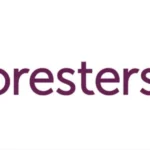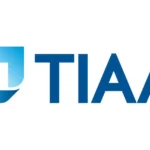Introduction
“Valuing an insurance book of business helps determine its worth by examining financials, market conditions, and key metrics. Accurate valuations aid in making informed decisions about buying, selling, or managing the portfolio.”
Valuing an insurance book of business is crucial for determining its worth and making informed decisions regarding acquisitions, mergers, or sales. This process involves assessing the portfolio of policies and customers that an insurance agency or broker manages.
Understanding the methods, key metrics, and factors influencing valuation ensures accurate and fair value assessments, benefiting both buyers and sellers.
This article will explore the components, methods, and critical considerations involved in valuing an insurance book of business.
Introduction to Insurance Book of Business Valuation

Valuing an insurance book of business is essential for understanding its financial worth and potential. Whether you’re considering buying, selling, or simply managing an insurance portfolio, knowing its value helps in making informed decisions.
This valuation involves various approaches and metrics, each contributing to a comprehensive understanding of the business’s value.
This article delves into the different components, methods, and factors influencing the valuation of an insurance book of business, providing practical insights and tips for an accurate assessment.
Understanding the Components of an Insurance Book of Business
To accurately value an insurance book of business, it’s essential to understand its key components:
- Policy Portfolio: The range of insurance policies, including life, health, auto, and property insurance, and their respective details.
- Customer Base: The demographics, retention rates, and loyalty of the customer base.
- Revenue Streams: The different revenue sources such as premiums, commissions, and fees.
- Claims History: The frequency and severity of claims filed, impacting future liabilities and profitability.
- Operational Costs: The expenses involved in managing the insurance book, including administrative and marketing costs.
Methods of Valuation
Several methods are used to value an insurance book of business. Each approach provides a different perspective on the business’s worth.
Income Approach: Discounted Cash Flow (DCF) Method
The Income Approach focuses on the present value of future cash flows generated by the insurance book. The Discounted Cash Flow (DCF) method involves projecting future revenues and expenses.
Then discounting them back to their present value using a discount rate that reflects the risk associated with the business. This method is highly analytical and relies on accurate financial forecasting.
Market Approach: Comparable Transactions Method
The Market Approach compares the insurance book with similar businesses that have been sold recently. The Comparable Transactions Method examines these transactions to determine a benchmark value.
This approach considers factors such as size, market conditions, and profitability to ensure a fair comparison.
Asset-Based Approach: Book Value Method
The Asset-Based Approach looks at the book value of the business’s assets. The Book Value Method involves calculating the net asset value by subtracting liabilities from assets.
While this method is straightforward, it may not fully capture the intangible value of the insurance book, such as customer relationships and brand reputation.
Key Metrics in Valuation

Several key metrics are crucial in the valuation process:
- Customer Retention Rate: High retention rates indicate stable revenue streams.
- Loss Ratio: The ratio of claims paid to premiums earned, impacting profitability.
- Growth Rate: The rate at which the book of business is expanding, reflecting future potential.
- Expense Ratio: The proportion of operational costs to revenue, indicating efficiency.
- Profit Margin: The net income as a percentage of revenue, showing overall profitability.
Factors Affecting Valuation
Various factors can influence the valuation of an insurance book of business:
- Economic Conditions: Economic stability and growth can affect the demand for insurance and overall profitability.
- Regulatory Environment: Changes in regulations can impact operational costs and revenue streams.
- Market Competition: The level of competition in the market can affect pricing strategies and customer acquisition.
- Technological Advancements: Technology can improve efficiency and customer service, impacting the book’s value.
- Customer Demographics: The age, income, and preferences of the customer base can influence future revenue potential.
How To Start A Trucking Business With One Truck
Intangible Assets in Insurance Book Valuation
Intangible assets play a significant role in the valuation of an insurance book of business:
- Brand Reputation: A strong brand can attract and retain customers, enhancing value.
- Customer Relationships: Loyal customers contribute to stable revenue streams.
- Technological Capabilities: Advanced technology can streamline operations and improve customer experience.
- Intellectual Property: Proprietary systems, software, and methodologies can add significant value.
- Employee Expertise: Skilled employees and management teams contribute to efficient operations and growth.
Due Diligence Process
The due diligence process is critical in verifying the accuracy of the valuation. This involves:
- Financial Review: Analyzing financial statements, revenue streams, and expense reports.
- Operational Assessment: Evaluating the efficiency and effectiveness of business operations.
- Legal Examination: Reviewing contracts, regulatory compliance, and potential liabilities.
- Customer Analysis: Assessing the quality and stability of the customer base.
- Risk Evaluation: Identifying and mitigating potential risks that could impact future profitability.
Adjustments and Normalizations
Adjustments and normalizations are necessary to present a true picture of the insurance book’s value:
- Non-Recurring Expenses: Excluding one-time costs that do not reflect ongoing operations.
- Owner’s Compensation: Adjusting for owner-specific expenses that may not continue post-sale.
- Revenue Adjustments: Normalizing revenue to account for seasonal or irregular income patterns.
- Expense Adjustments: Aligning expenses to industry standards for a fair comparison.
- Tax Adjustments: Reflecting the appropriate tax impact on profitability.
Presenting and Negotiating the Valuation
Effectively presenting and negotiating the valuation is crucial for a successful transaction:
- Detailed Report: Providing a comprehensive valuation report with clear explanations and supporting data.
- Clear Communication: Ensuring all parties understand the valuation methods and assumptions used.
- Negotiation Skills: Employing skilled negotiators to reach a fair agreement.
- Flexibility: Being open to reasonable adjustments based on new information or negotiations.
- Transparency: Maintaining honesty and transparency throughout the process to build trust.
Importance of Valuing an Insurance Book of Business

Valuing an insurance book of business is essential for several reasons:
- Informed Decision-Making: Accurate valuations help in making informed decisions regarding acquisitions, mergers, or sales.
- Strategic Planning: Understanding the value assists in strategic planning and growth initiatives.
- Financial Reporting: Accurate valuations are crucial for financial reporting and compliance.
- Investor Confidence: Proper valuation builds investor confidence and attracts potential buyers.
- Risk Management: Identifying and mitigating potential risks through the valuation process enhances business stability.
Additional Tips
- Stay Updated: Keep abreast of industry trends and changes that could impact valuation.
- Engage Experts: Consider hiring valuation experts for an accurate assessment.
- Regular Reviews: Conduct regular valuations to track changes in value over time.
- Leverage Technology: Use advanced software and tools for accurate data analysis.
- Focus on Growth: Invest in strategies that enhance customer retention and revenue growth.
Pros and Cons
| Pros | Cons |
| Accurate Decision-Making | Time-Consuming |
| Provides a clear picture of the business’s worth. | The valuation process can be lengthy and detailed. |
| Improved Negotiation | Costly |
| Enhances bargaining power during transactions. | Engaging experts and conducting thorough valuations can be expensive. |
| Strategic Insights | Complexity |
| Offers insights into areas of improvement and growth. | Requires a deep understanding of various valuation methods and metrics. |
| Risk Identification | Market Fluctuations |
| Helps identify potential risks and areas for mitigation. | Valuations can be affected by market volatility. |
| Financial Clarity | Subjectivity |
| Ensures clear and transparent financial reporting. | Some aspects of valuation, especially intangible assets, can be subjective. |
FAQs
1. What is the most common method used to value an insurance book of business?
The Discounted Cash Flow (DCF) method is one of the most common methods, as it provides a detailed analysis of future cash flows and their present value.
2. How often should an insurance book of business be valued?
It is advisable to value an insurance book of business annually or whenever significant changes occur, such as mergers, acquisitions, or market shifts.
3. What role do intangible assets play in the valuation process?
Intangible assets, such as brand reputation and customer relationships, significantly impact the valuation as they contribute to future revenue potential and business stability.
4. Can market conditions affect the valuation of an insurance book of business?
Yes, market conditions can significantly influence the valuation by affecting demand, pricing, and competition within the insurance industry.
5. Why is due diligence important in the valuation process?
Due diligence ensures the accuracy and completeness of the valuation by thoroughly examining financial, operational, legal, and customer aspects of the business.
Table: Key Metrics in Valuation
| Metric | Description |
| Customer Retention Rate | Measures the percentage of customers who continue to renew their policies. |
| Loss Ratio | The ratio of claims paid to premiums earned, indicating profitability. |
| Growth Rate | The annual rate of increase in the book of business. |
| Expense Ratio | The proportion of operational costs to revenue, reflecting efficiency. |
| Profit Margin | The net income as a percentage of revenue, showing overall profitability. |
These key metrics provide a comprehensive view of the insurance book’s financial health and potential for future growth, essential for an accurate valuation.
Conclusion
Valuing an insurance book of business is a multifaceted process that requires a thorough understanding of various methods, metrics, and factors.
By considering the income, market, and asset-based approaches, and paying attention to intangible assets, due diligence, and adjustments, one can achieve an accurate valuation.
This comprehensive understanding aids in informed decision-making, strategic planning, and successful transactions, ultimately enhancing the business’s growth and stability.

Hi, I’m Amaliyah-Richard! I’m a dedicated author at Skyvoxes. I hold a Bachelor’s degree in Business, and I love writing about all things business. My aim is to make complex business topics easy to understand and accessible for everyone. Whether you’re a seasoned professional or just starting out, I hope my articles provide you with valuable insights and practical advice.










